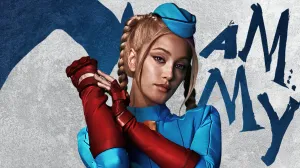Digging into the mechanics of any given time-travel story is bound to leave you with a little bit of a headache, and doesn’t actually promise much in the way of answers. The Flash is no different, but there are some pretty concrete, real-world details behind one of the movie’s running gags: the idea that, in the timeline where Michael Keaton is Batman, Eric Stoltz was the actor who played Marty McFly in Back to the Future. This is actually rooted in real-world events, although it takes a little bit of science fiction shenanigans to understand how Barry’s time-travel could have impacted them.
Videos by ComicBook.com
So, let’s start with the basics: In 1984, after Bob Gale and Robert Zemeckis managed to sell the Back to the Future script to Universal, they hoped to cast TV star Michael J. Fox in the role. Due to the demands of his schedule filming Family Ties, series producer Gary David Goldberg refused to let Fox take the job, concerned that it would hurt the show (especially with one of the show’s other regulars, Meredith Baxter, already out on maternity leave). Without Fox, the studio discussed numerous actors, and ended up landing on Eric Stoltz, who had impressed producer Sidney Sheinberg in the movie Mask. The female lead, originally offered to Claudia Wells, went to future The Office star Melora Hardin when Wells also had to say no to accommodate a TV commitment.
The film started production in November 1984, and was scheduled to wrap in February 1985. The plan was to turn the movie around within a year, and given the number of visual effects shots required, that meant they had to have an aggressive shooting schedule. Still, in late December, filmmakers screened their dailies, worried that the movie wasn’t working, and zeroing in on Stoltz’s grounded, intense performance. They had hoped for something lighter, but Stoltz wasn’t connecting with that take, and so there was a fundamental disconnect between the lead actor and the filmmakers.
Producer Steven Spielberg reached out to Gary David Goldberg again, who admitted he had never even shared the Back to the Future script with Fox. With Baxter now back, he agreed to pitch the movie to his actor, who took the job. On January 10, 1985, Stoltz was fired, and shortly thereafter, Hardin was replaced with Wells (whose TV show had since been cancelled), reportedly because Hardin was so much taller than Fox that the crew didn’t like how they looked on camera.
Much of the film had to be reshot, and Fox worked long, grueling days, being picked up on the set of Family Ties, sleeping in the car, and rolling out of bed to go film Back to the Future. At one point, he was so tired that he stressed out because he coudln’t find a camcorder he thought he needed for a Family Ties scene, before realizing that the prop was from Back to the Future instead. Obviously, the eventual product was great, and the whole Back to the Future trilogy has gone on to be widely regarded as one of the best franchises in Hollywood history. But in the world of The Flash, it’s apparently quite a different film.
There are actually rumors that Stoltz made it into the film — kind of — in one particular shot of Marty punching Biff. It’s a blink-and-you-miss-it moment, and Marty is barely onscreen and seen from behind, but there’s some evidence to back the theory.
“Editor Harry Keramidas, who cut the scene, pulled his notes, which show that the punch was reshot, but the printed takes were labeled ‘OK’ as opposed to ‘Good,’” Gale said in a 2020 interview. “So that could still be Eric’s fist. I think the only way we would know for sure is to check the actual edge numbers on the negative, but no one will risk damaging the negative by doing that. The workprint edge numbers might reveal the truth, but no idea if that even exists.”
If you want to read much more about this topic, check out Caseen Gaines’s We Don’t Need Roads: The Making of the Back to the Future Trilogy, which covers the Stoltz saga in depth.
The Flash is in theaters now, promising to reshape the DC Multiverse with the help of familiar faces and brand-new heroes. Barry Allen (Ezra Miller) ventures to the past to change history, resulting in massive repercussions for the future. Forced to team up with another version of Barry, the mysterious Kryptonian known as Supergirl (Sasha Calle), and the iconic Batman (Michael Keaton), the Scarlet Speedster is forced to reckon with his mistakes and save a doomed reality. The Flash is directed by Andy Muschietti, written by Christina Hodson from a story by Joby Harold, and produced by Barbara Muschietti.








